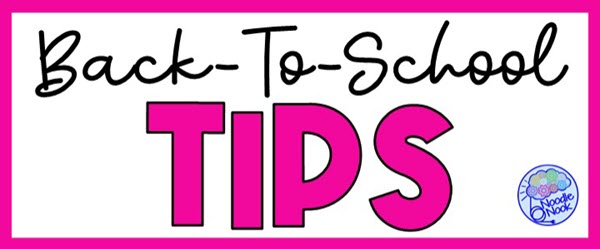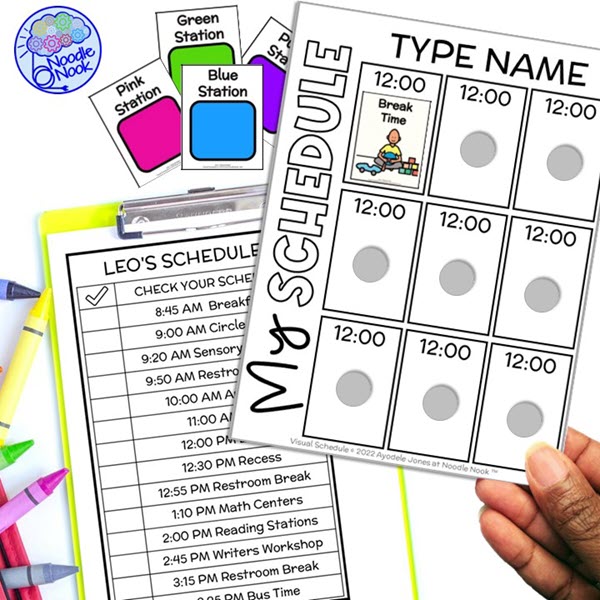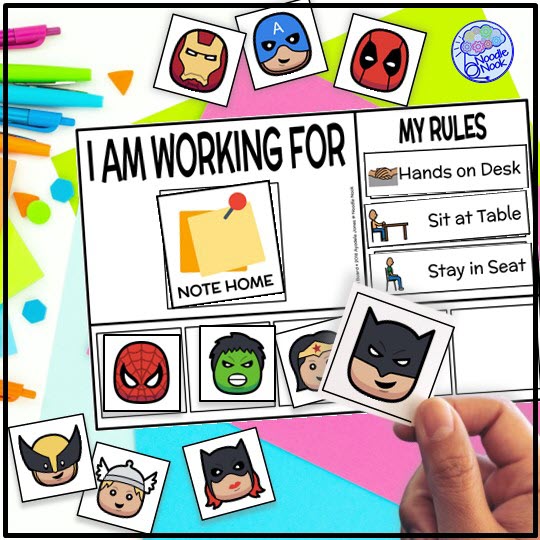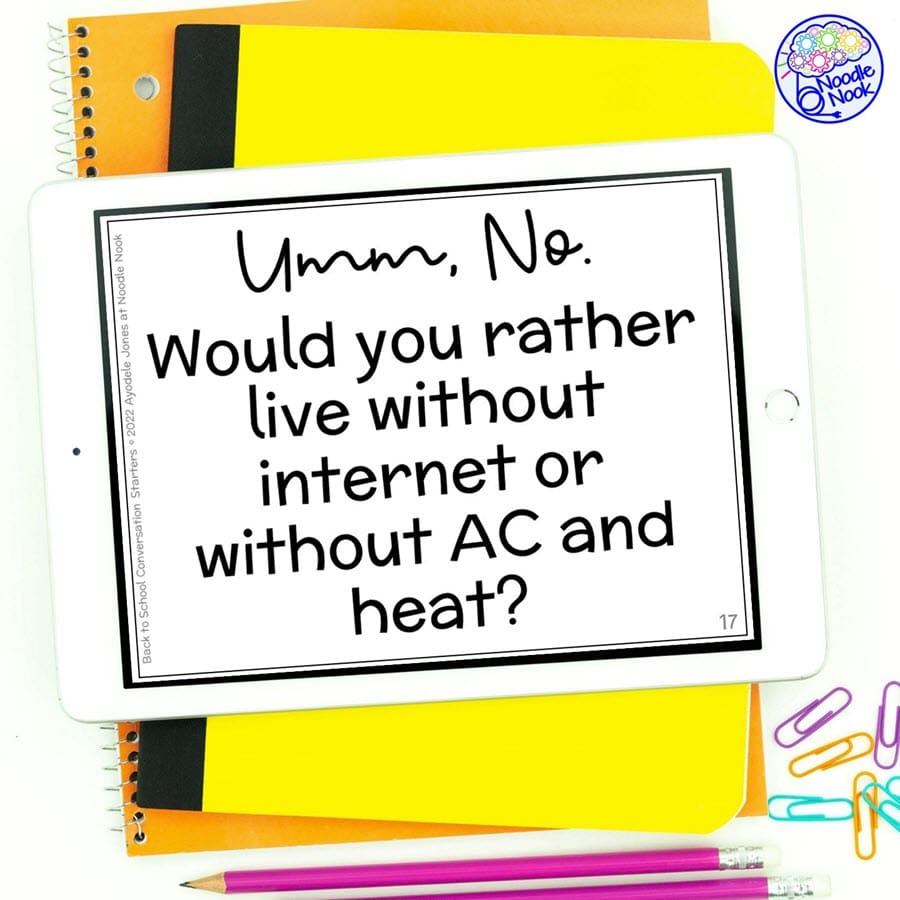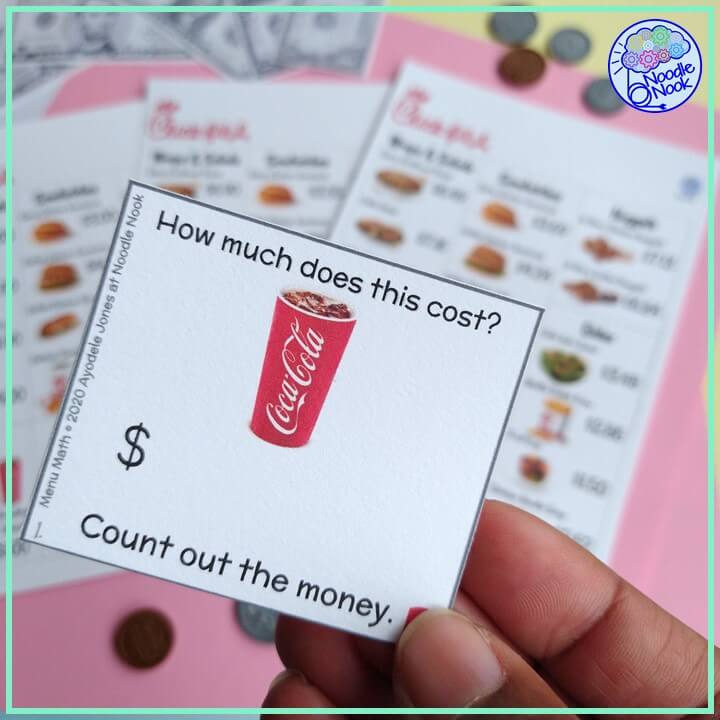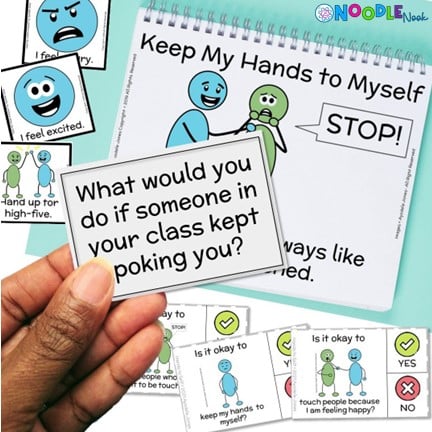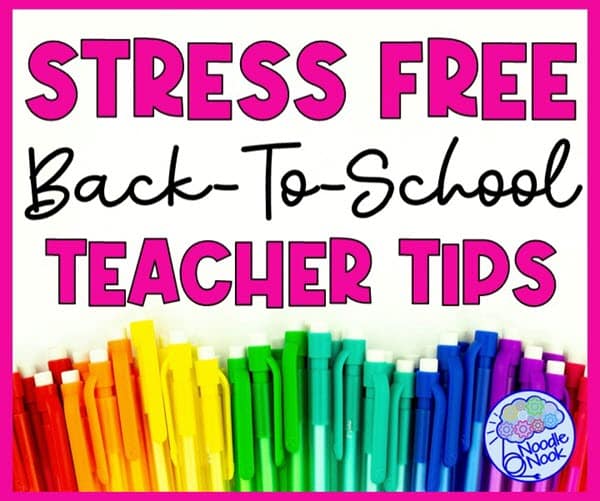Hey there, teachers! It’s that time of the year again – back to school! We know how important it is to start the new year on the right foot. Target has had the school supplies set up since basically the last day of school. I guess that means our poolside vaca is over. No worries. We’ve got your back with some awesome stress-free back to school transition tips for teachers, just like you. Let’s dive right in!
Step 1: Set Up Your Classroom
First things first, get your classroom ready! Clean up, organize, and make it look super inviting. Arrange your desks and stuff in a way that makes sense. Oh, and don’t forget to add some cool decorations that go with your class theme! WHY? Because having a neat and inviting classroom is crucial for both you and your students. When the classroom is well-organized, it creates a positive and engaging atmosphere for learning.
HOW TO:
- Clear out clutter: Before you set up the classroom, declutter and get rid of unnecessary items. Keep only the essentials, so you have more space for learning activities.
- Create cozy corners: Designate cozy corners with soft cushions and bean bags where students can relax and read during free time.
- Display student work: Set up bulletin boards to showcase students’ artwork and achievements. It fosters a sense of pride and community within the class.
TRY THIS:
If you are all about setting up your classroom for success starting on day one, then you absolutely need a visual schedule for your students and your team. Check out this student and class visual schedule featuring Boardmaker. It has you covered!
Step 2: Rules, Rules, Rules
Let’s talk about rules! You need them, and your students need to know them. Work together and make some fair and clear rules for the class. And hey, don’t forget to talk about the fun stuff too – like rewards for good behavior! WHY? Because having clear rules and expectations sets a positive tone for behavior. And that means a more respectful and inclusive classroom where everyone feels safe and valued.
HOW TO:
- Collaborative rule-making: Involve your students in creating the classroom rules. This way, they’ll feel ownership and responsibility for following them.
- Positive reinforcement: Implement a reward system that encourages good behavior. Use stickers, stamps, or a reward chart to track and celebrate students’ achievements.
- Consistent consequences: Be consistent with the consequences for breaking rules, but also emphasize the opportunity for redemption and learning from mistakes.
TRY THIS:
To make rule-learning fun, create a “Rule Rap” with your students, turning the rules into catchy rhymes that they can recite together. This will not only help them remember the rules but also add an element of excitement to the class!
And if you work with students who have significant disabilities, then you absolutely need a token board with the rules posted for a student to see within their workspace. After all, ‘no spitting’ is something you can’t say enough!
Step 3: Be a Friend, Make a Friend
Building great relationships with your students is the key. Be all smiles and give them a warm welcome. Icebreakers are your new BFF – use them to help your students get to know each other. Show them you care, and they’ll feel right at home! WHY? Because building strong teacher-student relationships promotes a positive classroom environment. And that rocks because it enhances student engagement and academic success.
HOW TO:
- Warm greetings: Greet your students with a smile and use their names. This simple act of friendliness makes them feel valued and appreciated.
- Icebreaker activities: Plan fun icebreaker games during the first week to help students get to know each other and feel more comfortable in the class.
- Active listening: Listen attentively to your students’ concerns and stories. This shows them that you care about their well-being and fosters trust.
TRY THIS:
At the beginning of the year (or anytime really) have some get-to-know-you activities set up for your students. Grab these Conversation Starters, if you need a go-to that works any time of year.
Step 4: Learning Can Be Fun
Who said learning has to be boring? Not you! Plan some cool activities that match what you’re teaching. Mix it up with games, group projects, and hands-on stuff. Spice it up with some techie tools too – it’s a win-win! WHY? Because creating engaging and enjoyable learning experiences makes the classroom more vibrant. Moreover, it encourages students to actively participate in their education… And we want that, right?!?
HOW TO:
- Educational games: Incorporate educational games and quizzes that align with your lessons. Online platforms or board games related to the subject can be great options.
- Real World Activities: Connect classroom concepts to real-world scenarios or situations, allowing students to see the practical applications of their learning.
- Peer Partnerships: Foster collaboration and teamwork by pairing students to work together on projects or problem-solving activities.
TRY THIS:
I love menu math activities for students in the classroom! (Check Them Out Here!) They make the perfect center or station, especially for students with disabilities. Even better, they are super high interest and that means students stay engaged in the lesson. Yes, please!
Step 5: Fostering a Growth Mindset
Sometimes, learning is hard. And at the beginning of the year, it can be a lot to manage, learning, social relationships, and a lots of change. But fear not, because fostering a growth mindset can help your students thrive! HOW? Well, by boosting student’s self-confidence, resilience, and willingness to embrace challenges. And all of this leads to better overall academic performance.
HOW TO:
- Emphasize the power of “yet”: Teach students that adding “yet” to the end of a sentence can change their perspective. For example, “I don’t understand this math problem… yet!”
- Celebrate effort: Praise students for their hard work and effort rather than solely focusing on outcomes. Recognize their progress and improvements over time.
- Teach social skills: Guide your students on essential social skills, such as active listening, cooperation, and conflict resolution. These skills will not only help them succeed academically but also in their future relationships and postsecondary life.
TRY THIS:
Social stories are a mega-tool in the classroom! They are an easy and consistent way to teach so many skills students need. Things like perseverance, dealing with disappointment, and even staying on topic are all great social story topics. To read more about social story essentials, check out this article here.
RECAP: Tips for a Stress-Free Back-to-School Transition
So there you have it, teachers! Follow these five simple steps, and you’ll rock the back-to-school transition like a pro. Your classroom will be a paradise of fun and learning, and your students will love you for it. Get ready for an amazing school year! You’ve got this! 🌟

